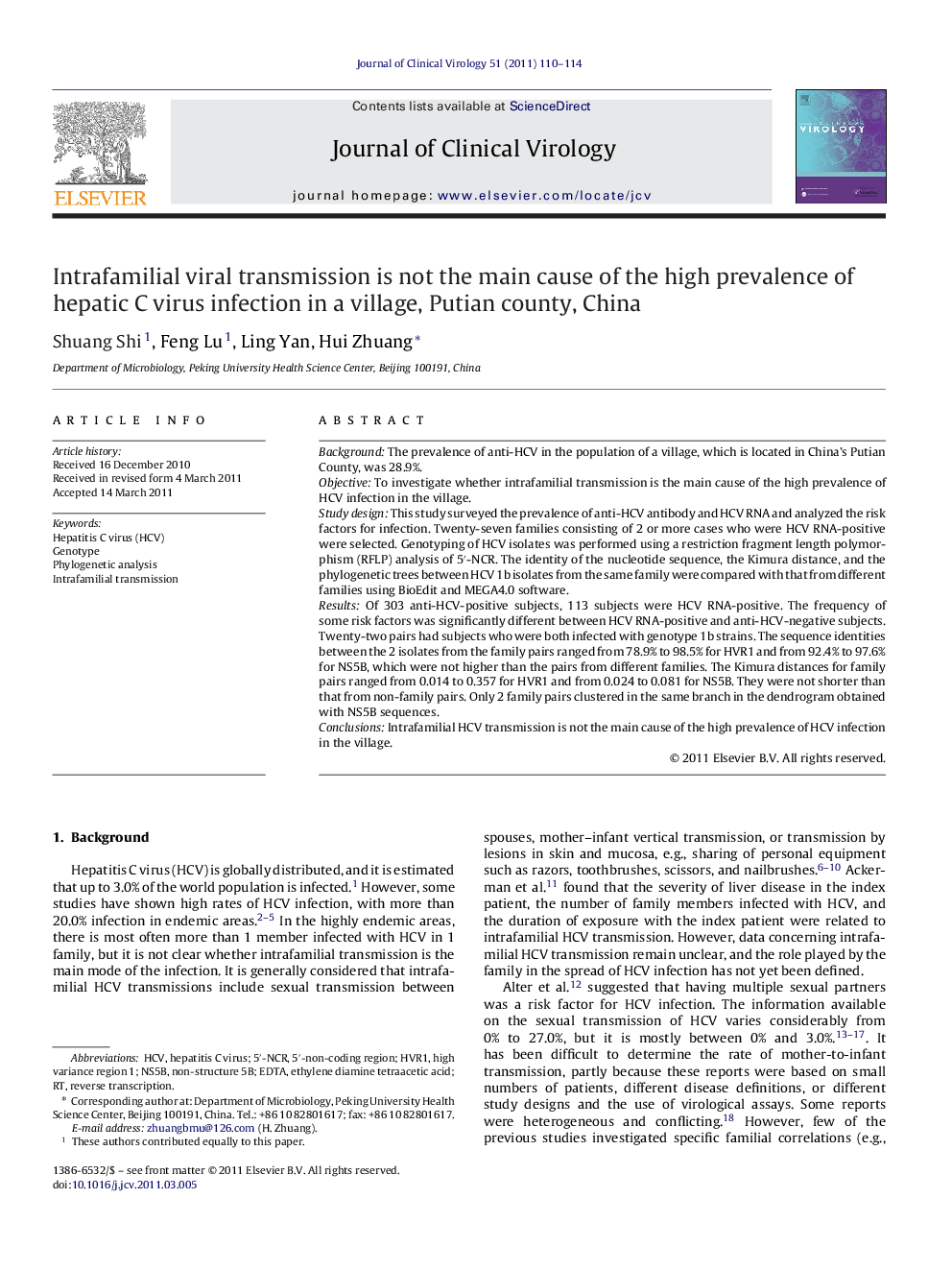| Article ID | Journal | Published Year | Pages | File Type |
|---|---|---|---|---|
| 3369727 | Journal of Clinical Virology | 2011 | 5 Pages |
BackgroundThe prevalence of anti-HCV in the population of a village, which is located in China's Putian County, was 28.9%.ObjectiveTo investigate whether intrafamilial transmission is the main cause of the high prevalence of HCV infection in the village.Study designThis study surveyed the prevalence of anti-HCV antibody and HCV RNA and analyzed the risk factors for infection. Twenty-seven families consisting of 2 or more cases who were HCV RNA-positive were selected. Genotyping of HCV isolates was performed using a restriction fragment length polymorphism (RFLP) analysis of 5′-NCR. The identity of the nucleotide sequence, the Kimura distance, and the phylogenetic trees between HCV 1b isolates from the same family were compared with that from different families using BioEdit and MEGA4.0 software.ResultsOf 303 anti-HCV-positive subjects, 113 subjects were HCV RNA-positive. The frequency of some risk factors was significantly different between HCV RNA-positive and anti-HCV-negative subjects. Twenty-two pairs had subjects who were both infected with genotype 1b strains. The sequence identities between the 2 isolates from the family pairs ranged from 78.9% to 98.5% for HVR1 and from 92.4% to 97.6% for NS5B, which were not higher than the pairs from different families. The Kimura distances for family pairs ranged from 0.014 to 0.357 for HVR1 and from 0.024 to 0.081 for NS5B. They were not shorter than that from non-family pairs. Only 2 family pairs clustered in the same branch in the dendrogram obtained with NS5B sequences.ConclusionsIntrafamilial HCV transmission is not the main cause of the high prevalence of HCV infection in the village.
